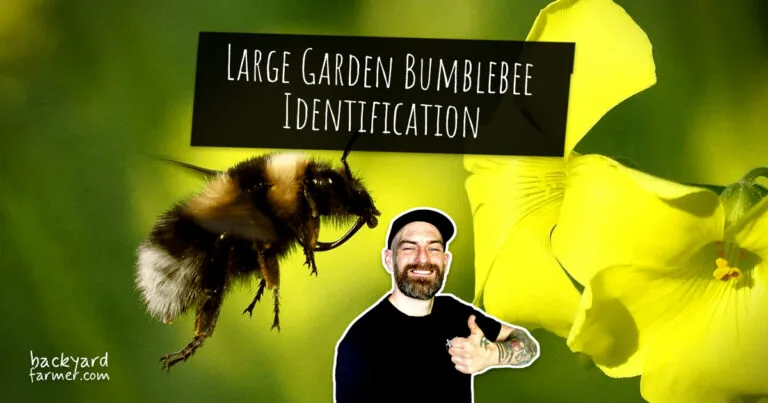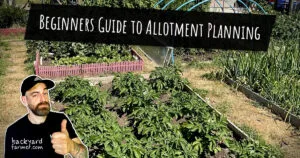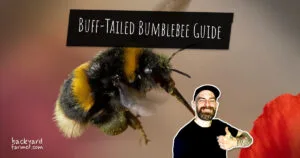Table of contents
Bee Species Profile: Large Garden Bumblebee (Bombus ruderatus)
The Large Garden Bumblebee (Bombus ruderatus) is one of the UK’s rare but important long-tongued bumblebee species. It is a crucial pollinator of long-tubed wildflowers such as foxglove and red clover, and can be found in gardens, wildflower meadows, and farmland, especially in southern England.
With its slender body, striking yellow bands, and long tongue adapted for deep flowers, the Large Garden Bumblebee is not only visually distinctive but also vital for pollination and biodiversity. However, due to habitat loss and intensive farming practices, its population has been in steady decline.
This complete identification guide explains how to recognise the Large Garden Bumblebee, distinguish it from similar UK bumblebee species, and take steps to help protect this vital pollinator.
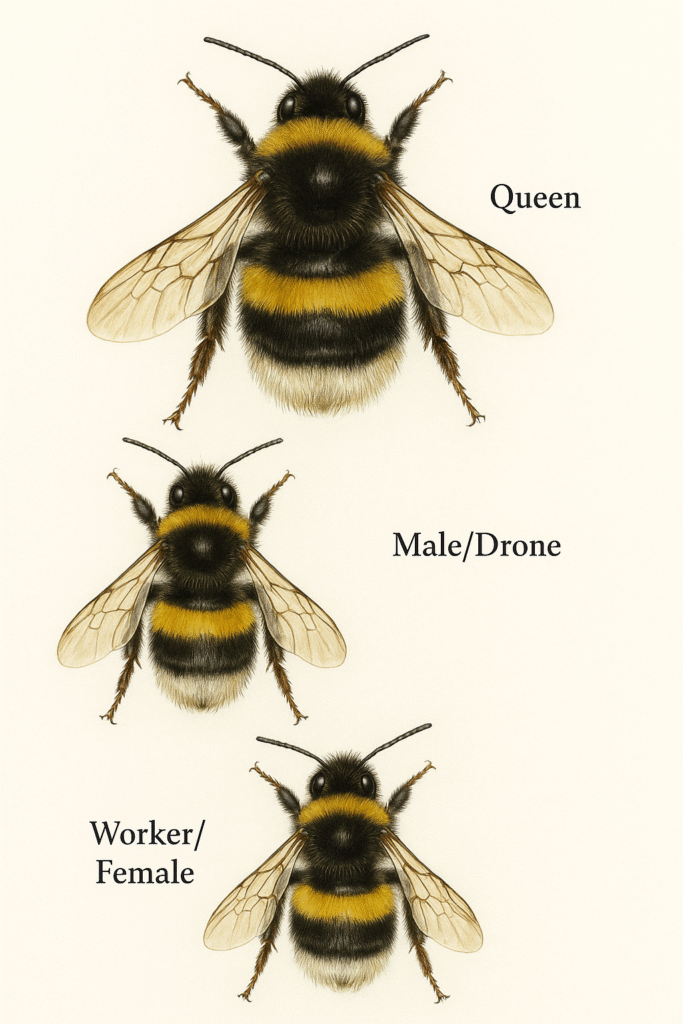
How to Identify the Large Garden Bumblebee
The Large Garden Bumblebee is recognised by its long tongue, slender body, and black face with two bright yellow bands on the thorax and one on the abdomen. These traits distinguish it from bulkier bumblebee species such as Bombus terrestris.
You are most likely to spot this bee feeding on long, tubular flowers in rural gardens, meadows, and wildflower-rich field margins. Its specialist feeding behaviour makes it a key pollinator for both wild and cultivated plants.
Physical Characteristics
- Queen – 14–16 mm; slim with a black face and vivid yellow bands on the thorax and abdomen.
- Worker – 11–14 mm; smaller and slimmer than the queen, with similar markings.
- Male (Drone) – 13–15 mm; slightly more yellow on the face and thorax.
Identification and Key Facts
| Attribute | Details |
|---|---|
| Common Name | Large Garden Bumblebee |
| Latin Name | Bombus ruderatus |
| Size | Queen: 14–16 mm; Worker: 11–14 mm; Male: 13–15 mm |
| Location | Widespread in southern England; scarce in other UK regions |
| Active Months | March to September |
| Habitat | Gardens, wildflower meadows, and open farmland |
| Nesting Behaviour | Underground cavities, often abandoned rodent burrows |
| Social Behaviour | Social; colonies of up to 200 individuals |
| Flora and Fauna | Red clover, white clover, foxglove, honeysuckle, comfrey |
| UK Status | Declining due to habitat degradation and agricultural changes |
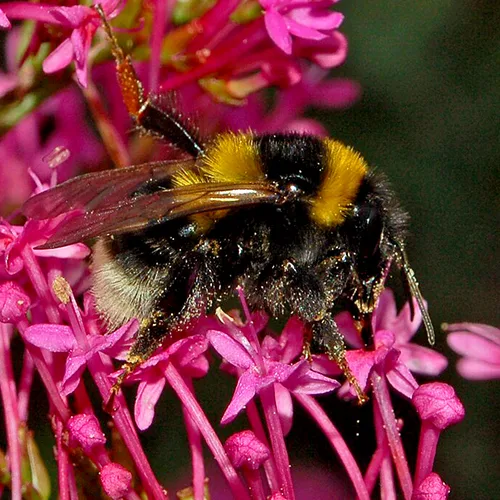
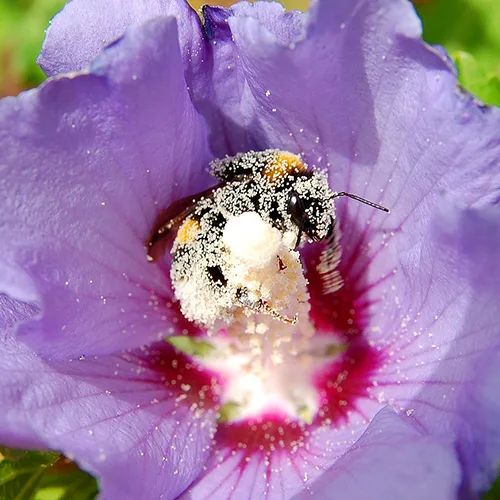

Similar Species
The Large Garden Bumblebee is often confused with other UK bumblebees due to overlapping colours and habitats:
- Garden Bumblebee (Bombus hortorum) – Nearly identical in markings but shorter-bodied. B. ruderatus is slimmer and slightly larger.
- Buff-tailed Bumblebee (Bombus terrestris) – Stockier in build with a buff-coloured tail and duller yellow bands.
- White-tailed Bumblebee (Bombus lucorum) – More compact with brighter yellow bands and a white tail.
Learn more in our UK Bee Identification Guide.
Why the Large Garden Bumblebee Matters
The Large Garden Bumblebee supports both wildflower pollination and agricultural biodiversity. Its specialised tongue allows it to reach nectar in flowers that many other bees cannot access, including clover and foxglove.
As a declining species, its vulnerability reflects broader environmental changes in the UK. Protecting this bee supports ecosystem balance and helps maintain yields in crops with deep flowers.
Frequently Asked Questions (FAQ)
B. ruderatus is slimmer and slightly larger, with subtle differences in band colour and shape.
They are drawn to long-tubed flowers such as red clover, white clover, foxglove, honeysuckle, comfrey, and viper’s bugloss.
Its decline is mainly due to habitat loss, monoculture farming, and the reduced presence of nectar-rich wildflowers.
Yes. Only females (queens and workers) can sting, and they do so only when provoked.
Occasionally. They may be found in urban parks and gardens if suitable flowers and undisturbed nesting areas are available.
How You Can Help
Plant Long-Tubed, Bee-Friendly Flowers
Support local pollinators by planting:
- Red clover
- White clover
- Foxglove
- Comfrey
- Viper’s bugloss
- Honeysuckle
Avoid Harmful Pesticides and Herbicides
These substances pose particular risks to bumblebees:
- Neonicotinoids (e.g. Imidacloprid, Thiamethoxam)
- Glyphosate-based weed killers
- Systemic insecticides
Provide Safe Nesting Habitats
Improve bee survival by:
- Leaving areas of undisturbed ground
- Avoiding compost turning during spring
- Installing bee boxes or underground shelters
Even small actions in your garden can make a significant difference.
Read more in this WWF guide to bee-friendly gardening.
